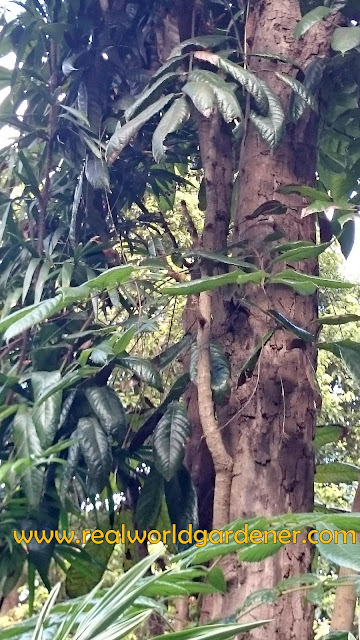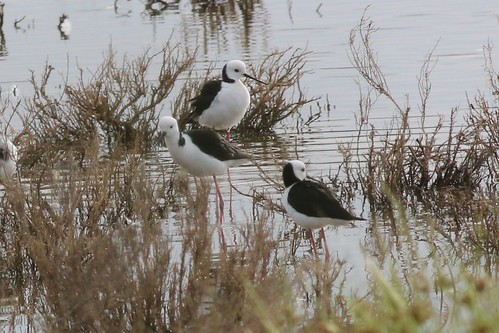PLANT DOCTOR
For hundreds of years the rose has been widely recognized as a symbol of love, sympathy or sorrow, but did you know that the rose is not only England’s national flower but from 1986, America’s as well.Few people dislike rose
 |
| Roses for your garden photo M. Cannon |
Not everyone likes or can grow them successfully, but us gardeners still like to try.
Here’s some timely tips.
I'm talking with Steve Falcioni, General Manager of www.ecoorganicgarden.com.au
Roses need to be pruned if you want plenty of flowers because they flower on new growth.
Prune your roses mid winter or in August for those districts that receive late frosts.
Quick Pruning Guide
Hybrid Teas:For example:Papa Meilland, Peace, Sir Donald Bradman.
Prune to half of the bush and leave 3-4 canes cutting older greying canes back to the base.
If you only have 3-4 canes then leave them and hopefully you'll have new vigorous growth.
Modern Bush Roses:
For example: David Austen.
Prune by one-third but don't cut out any old canes. They need to be left like a bush.
Climbing Roses.
You should have a framework of 3-4 main canes, from which come shorter canes.
Only prune these to about 3-4 buds, about 10 cm.
Note: All pruning cuts should be sloping and about 1 cm above an outward facing bud.
Bare Rooted Roses:
 |
| Old world roses photo M. Cannon |
When you receive your bare rooted roses the two most important things that get your roses off to a great start are to make sure they're in the right growing conditions and to plant them properly.
Here’s something you mightn’t know.
We usually call the sharp spikes on the stem of a rose bush "thorns", but these are in fact technically prickles.
If you have any questions about rose care or have some information to share, drop us a line to realworldgardener@gmail.com or write in to 2RRR PO Box 644 Gladesville NSW 1675
VEGETABLE HEROES
Curry Leaf Tree or Bergera koenigii it used to be called Murraya koenigii, and for the most part, because people are more familiar with that botanical name, the nursery industry is sticking to it and so shall I.Murraya Koenigii grows very well in all of Australia.
What is a curry leaf tree really?
Basically it’s just an aromatic Murraya species in the family Rutaceae.
Even when fresh the leaves of this tree have a strong curry aroma, but they take on a whole different flavour in cooking. Mmmm!
But there are other shrubs called curry plant, so be careful, because the others aren’t the edible or cooking with variety.
The Curry tree is native to India and Sri Lanka, and can grow into a large shrub to small tree growing 4-6 m tall.
However, if you keep it in a pot, you can keep it reasonably small.
What Does It Look Like?
The leaves are much like but in a smaller way to Murraya or Orange Jessamine being in the same genus.
Why wouldn’t you grow this bush with
 |
| Curry Leaf Tree |
One thing to remember though is that after flowering, the plant produces small black, shiny berries that are edible.
The second part of the botanical name or the species name commemorates the botanist Johann Gerhard König which translates to king in the German language.
Where it likes to grow
Full sun or light shade is the ideal spot and all you need to do is fertilize with palm or citrus fertilizer to get plenty of leaves.
Curry leaf plants can be grown in large pots and also on the ground.
The type of soil doesn’t matter either.
I have one plant in large pot and it’s only about 1 metre in height.
I’ve got to say that it’s pretty slow growing so don’t worry too much about re-potting it.
They have a tendency to sucker when in the ground, so keeping it a pot if you’re worried about this is probably a good idea.
Full grown plants on the ground can survive frosty conditions, plus the curry leaf tree is hardy and drought tolerant once established.
Where Can You Grow it?
Murraya koenigii or curry leaf tree grows anywhere from tropical areas to cool temperate districts.
A listener, Lesley, has written in to say that she has have several plants in the ground in Melbourne which are now nearly 2 ½ to 3 metres, and thriving.
She doesn’t even cover them during winter period!
 |
| Murray koenigii flowers |
Picking of the leaves for cooking is also a way of getting bushy growth.
If you want to propagate this plant, when you see the berries at the very tips of the branches turning black, is the time to propagate from seed.
By the way, in some sub-tropical districts this tree has spread into bushland because of birds eating the berries.
If you live in those districts, prune off the berries before the birds get them.
They can be propagated from root suckers but the new plant will sucker even more if you do it this way.
TIP:
For propagating the fruits are best picked when they are half ripe or when fully ripe ie, quite black.
The fruits should also never be allowed to dry, because the curry plant seeds in them lose their viability when they shrivel or dry up.
Peel the seed out of half ripe or fully ripe fruits by squeezing out the flesh before planting.
The fruit around the seed may slow down germination.
Seeds are best planted quite shallowly in seed raising mix and germinate in about 10 days -they germinate best with warm soil 210 to 270 C
HOW TO USE CURRY LEAF
Use young leaves and crushed seeds in curries, soup stocks and sauces.
The leaves are spicy but not hot so they can flavour vinegars and salad oils.
Curry leaves are used a lot in South Indian kitchens, where the curry leaves are generally sautéed in oil with mustard seeds and added to dhal, fresh coconut chutney or vegetable dishes.
I always strip the leaves from their stalk before frying, and sometimes tear and crush them between my fingers to release more of their essential oils.
UNUSUAL TIP: do you worry about bad breath?
You probably haven’t heard of this type of breath freshener before.
Did you know that the people of India grow the curry leaf tree, Murraya koenigii, not only to flavour traditional dishes but also known for treating bad breath.
 |
| Murraya koenigii berries |
I can’t say I’ve tried it though.
Why Are They Good For You?
Apparently scientists are studying the extract of the leaves as a natural medicine against high cholesterol and high blood sugar.
Curry leaves are also known to be good for your hair, for keeping it healthy and long.
You can buy the plant from the herb section of your local nursery or garden centre, some Asian supermarkets, and online from www.diggers.com.au
But be careful that you’re not getting the curry leaf bush-Helichrysum italicum.
This has a grey feathery leaf and can’t be used in cooking at all, even though it smells of curry when you brush past it.
Think of the king when buying your Curry tree plant-Murraya Koenigii!
THAT WAS YOUR VEGETABLE HERO FOR TODAY
DESIGN ELEMENTS
Would you like a garden make-over but think, Nah, it’s too costly?There are other ways of making over your garden without all that expense that you see on those televised garden renovation shows every week.
Over the next few weeks, Design Elements will explain different ways of updating your garden without all that expense, sweat and hard labour.
 |
| Flowers to update your garden. Photo M.Cannon |
Today, we’re starting with updating your garden using flower colour.
I'm talking with was Louise McDaid Landscape Designer.
 |
| Heliotrope arborescens; Cherry Pie. photo M Cannon |
One of the great things about plants is the huge variety of colours available – both in their leaves, their flowers and their berries or fruit.
Flower: the blooming of flowers brings joy to the garden and seasonality through different flowering times.
As an example, take Perennials
Oriental lily, asiatic lily, hosta, Peruvian lily (alstroemeria), pink butterflies (gaura), statice (limonium), Christmas bells, gerbera, scabious (scabiosa), Mona lavender (plectranthus).
Plus there’s so many new flower cultivars coming out each season to tempt you.
PLANT OF THE WEEK

The Davidson plum looks rather alien and Dr Seuss like the dark skinned fruit hang like bunches of large grapes from either the long narrow trunk or the branches and there’s a variety to suit most climates in Australia.
As for picking the fruit, they conveniently drop to the ground when they’re ripe.
Let’s find out about growing it.
I'm talking with the plant panel: Karen Smith, editor of Hort Journal www.hortjournal.com.au and Jeremy Critchley, The Green Gallery wholesale nursery owner. www.thegreengallery.com.au
Fruits are dark purple in colour, oval shaped and covered with fine almost indiscernable hairs.
Fruits contain two large seed cases with a single seed and are fibrous.
The fruit flesh is dark red when fully ripe.
D. pruriens fruits are produced in large pendulous clusters from the trunk, they are large deep purple, though the fruit flesh is slightly paler and contains more fibre than its NSW cousin..
Davidson plum trees have a narrow habit with branching on the top half to a third of the tree.
 |
| Davidsonia pruriens. photo M Cannon |
Did you know that the Davidson plum has 100x the vitamin C found in oranges?
They also contain lutien, magnesium, calcium, potassium and manganese.
Store in the fridge for a couple of days or you can freeze them.
When making jams be sure to use twice the amount of sugar, but first cut the fruit in half and remove the two stones or seeds.
You don’t have to just make jam with this fruit.
You can make Davidson Plum Paste, Davidson Plum Chutney or even Davidson Plum and Ginger sauce.
Davidson Plum Chutney
1 garlic clove
butter for frying
200g Davidson’s plums, de-seeded and chopped
200g brown sugar
100g sultanas
100ml dry white wine
100ml white wine vinegar
a pinch of curry powder
1 clove
Saute' the onions and chopped garlic in a little butter until transparent. Add the remaining ingredients and boil for 1 to 2 hours or until thick stirring occasionally.








